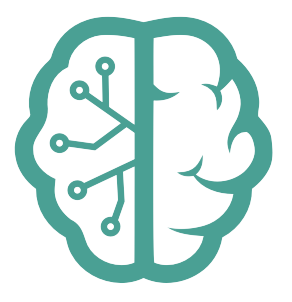this.GUI aims to automate the GUI generation process by allowing users to pass data or configurations. It then dynamically builds the UI based on these inputs. This package exports pre-defined components, theme providers, MDX integration, and a Site/App builder for rapid prototyping and deployment.
Install this.gui via npm:
npm install this.guiAfter installation, you can start the development server using:
npm startThis command will initialize the app, allowing you to use the Site Builder and Component Library.
1. Pre-built Components
• Atoms: Smallest building blocks like buttons, inputs, text elements, etc.
• Molecules: Combinations of atoms to form reusable UI elements like cards, forms, tables, etc.
• Organisms: More complex components that combine multiple molecules.
• Layouts & Templates: Predefined page structures that can be customized using the JSON configuration.
• MDX integration for dynamic content rendering.
• Easy-to-use theme providers for switching between light and dark modes.
• Drag-and-drop interface for building entire pages or applications.
• Generates JSON configuration that maps to your UI structure.
• The JSON-based UI renderer automatically handles rendering of components based on the passed configuration.
Getting Started
Here’s a quick overview of how to use this.GUI in your project.
1. Direct JSX Usage
The index.js file allows you to import and use pre-built components directly in your JSX/JS files.
import { Button, TextInput } from 'this.gui/Atoms';
function MyComponent() {
return (
<div>
<Button label="Click Me" color="primary" />
<TextInput placeholder="Enter text" />
</div>
);
}2. Dynamic UI via JSON
Use the ComponentRegistry and renderComponent function to build dynamic UIs from JSON configurations.
Example JSON:
{
"layout": [
{
"type": "Button",
"props": { "label": "Click Me", "color": "primary" }
},
{
"type": "Heading",
"props": { "text": "Welcome to Our Site", "level": 1 }
}
]
}Rendering the above JSON with this.GUI:
import React from 'react';
import { Page } from 'this.gui/Page';
const config = {
layout: [
{ type: 'Button', props: { label: 'Click Me', color: 'primary' } },
{ type: 'Heading', props: { text: 'Welcome to Our Site', level: 1 } }
]
};
function App() {
return <Page config={config} />;
}3. Component Registry & JSON Mapping
ComponentRegistry maps JSON keys to the corresponding React components. This allows dynamic rendering of components via JSON without directly importing each component.
const ComponentRegistry = {
Button: Atoms.Button,
Heading: Atoms.Heading,
Paragraph: Atoms.Paragraph,
*// More mappings...*
};Component Categories
• Atoms: Small, reusable components like Buttons, Inputs, Paragraphs.
• Examples: Button, TextInput, Paragraph, Image, Icon, etc.
• Molecules: Components that combine multiple atoms.
• Examples: Card, Navbar, Breadcrumbs, FormField, AudioPlayer, etc.
• Organisms: More complex components combining multiple molecules.
• Examples: LoginForm, SidebarLayout, etc.
• Layouts & Templates: Complete page structures.
• Examples: TwoColumnLayout, LandingPageTemplate, etc.
Key Components
- Component Registry
• Maps JSON keys to components for dynamic rendering.
- JSON Configuration Files
• Define the layout and structure of your UI in JSON.
- Rendering Engine
• Reads the JSON configuration and renders the appropriate components dynamically.
Example Usage
Here’s an example that showcases how to use the JSON configuration for rendering a dynamic UI.
{
"layout": [
{
"type": "Card",
"props": { "variant": "solid", "color": "primary-color", "width": "300px" },
"children": [
{
"type": "Paragraph",
"props": { "text": "Welcome to our site!" }
}
]
}
]
}You can pass this JSON configuration to the Page component to render the UI dynamically:
import { Page } from 'this.gui/Page';
import config from './config.json'; *// Import the JSON configuration*
function App() {
return <Page config={config} />;
}Additional Resources
• Storybook: For browsing and testing all pre-built components. Launch Storybook with:
npm run storybook
•MDX Editor: Edit and visualize MDX content in real time.
this.GUI is part of the Neurons.me ecosystem, a set of modular data structures designed to work together across multiple domains.
this.me - this.audio - this.text - this.wallet - this.img - this.pixel - be.this - this.DOM - this.env - this.GUI - this.be - this.video - this.atom - this.dictionaries
These classes encapsulate the functionalities to domain-specific data.
-
License: MIT License (see LICENSE for details).
-
Privacy Policy: Respects user privacy; no collection/storage of personal data.
-
Terms of Usage: Use responsibly. No guarantees/warranties provided. Terms | Privacy neurons.me
